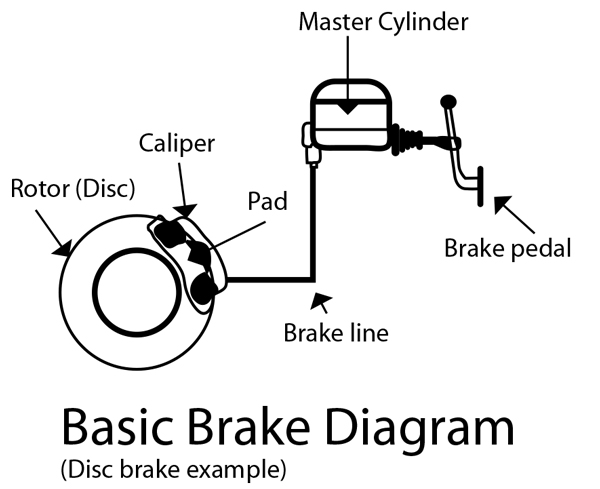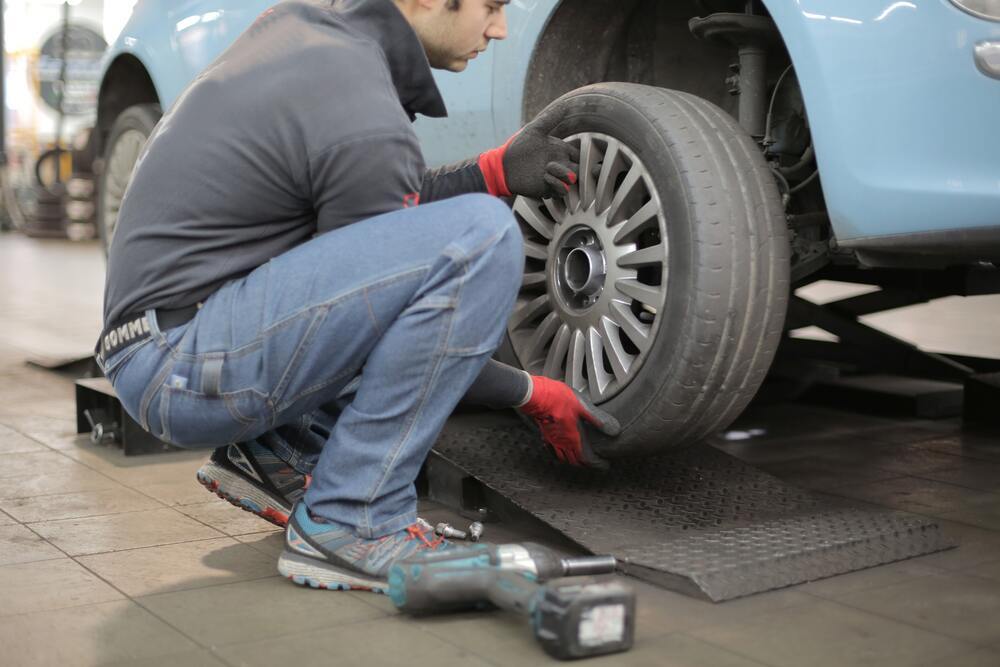Brakes are one of the most important parts of any automobile. They control the speed of any vehicle and are essential to preventing minor bumps to even the most disastrous vehicular accidents.
Keeping your car’s brake system in top condition is not just a wellness option, it is a necessity for your car. It does not only protect you from sudden car issues while driving, it also protects the people riding with you and the other drivers on the road with you.
The Brake System

To slow down a car, a lot happens in the brake system. The basic components of a brake system are the calliper, disc, and pads. The metal disc is connected to the tyres and spins along with them. To slow down the wheels, the calliper is affixed to a portion of the wheels and acts as a clamp.
When the brake pedal is depressed by the driver, the calliper clamps to the disc and the brake pads attached to each end come into contact with the disc. This generates friction, which slows down the metal disc and, subsequently, the tyres.
Maintaining your Brake Pads
Because the brakes are one of the most used components in a vehicle, its parts may become significantly worn out faster than others. This can also be affected by your driving style so it varies widely depending on the type of vehicle and the driver.
The brake pads, being made of a material softer than the metal discs, are worn out over time. At some point, they become too thin to efficiently generate friction and slow down the metal discs. By then, they should be replaced before they become too thin for the brake to actually work.
There are a couple of warning signs that let you know when you need to replace your brake pads or have it checked. The most effective way to know is to check them visually. As a rule of thumb, the brake pads should not be any less than ⅛ of an inch. They should also be the same thickness all throughout, or else there might be an issue with your brakes being uneven.
Brake pads also have metal tabs inserted inside them. These are used as an indicator to signal when the brake pads become too thin. Once the brake pads reach a certain length, the tip of the metal becomes exposed and it comes into contact with the metal disc. This produces a screeching sound, warning the driver it is time to have the pads replaced.
When you check your brake pads visually, it’s also a good idea to check the calliper and disc for any issues. The disc shouldn’t have any dents, rust, or warped shapes. If you think the disc or pads are more worn out on one side compared to the other, it is recommended that you have a professional check it for any issues with the calliper.
Costs of Replacing Brake Pads

Thousands of vehicles have their brake pads replaced every week. There are many garages and service centres that offer brake pad replacement
There are many factors that affect the cost of these services. The most basic factors are the make, model, and engine of the vehicle looking to get replaced. The reason why they are different per car is that the brake pads are innately different depending on each vehicle. A certain model might have better performance or a heavier build. Factors such as these cause brake pads to vary per vehicle.
Differences between brake pads can include the material they are made out of, their shape, and even engineering features as each type is engineered especially for that vehicle only.
Brake pad replacements usually come in pairs and are usually priced for the front and the rear pads. Some service packages also include disc replacement which can drive up the costs but are useful if your disc also needs replacing.
According to various sources online, the cost for replacing brake pads can vary from £90 to 165, depending on the car and if it is for the front or rear. Generally, heavier and high-end vehicles such as the Porsche Cayenne are at the upper end of the spectrum, with prices for going as high as £140 to 165. This is compared to cars like the VW Golf 4, whose brake pad replacements only go for around £90 to 110 due to the compact size of the car.
Aside from this, garages charge labour costs, usually around £35-45 per hour. The length of the job can change depending on the type of brake system and whether it is easy to get and fit the brake pads. For most car models, the job can be done in 1-2 hours and the labour can be around £45-70.
If you’re also looking to have your discs replaced along with the pads, this can drive the cost up. The cost for a pair of discs are typically around £80-90 and the labour cost can change to about £130-140.
Aside from that, service and labour costs can vary across the United Kingdom depending on where you are. It is naturally more expensive to have your car repaired in garages inside London compared to those at the outskirts. WhoCanFixMyCar.com has a full list of labour costs per area in the UK which you can check out.
Of course, replacing brake pads and discs is a periodic expense. Ultimately, the lifespan of your brakes depends on how you drive and maintain your car. For tips on how to get more miles on your brakes, you can check out this guide by Auto Butler on how to make brakes last longer.

